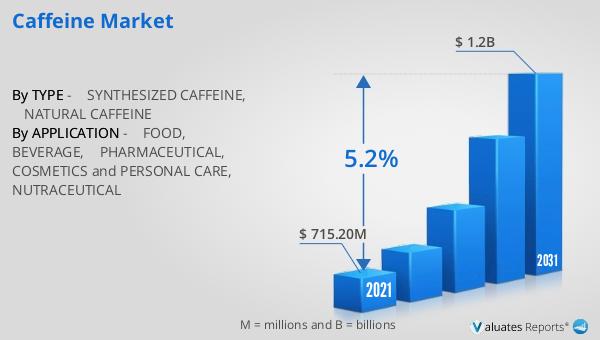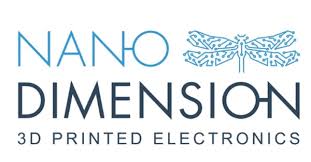LIST OF TABLES
TABLE 1. GLOBAL CAFFEINE MARKET, BY TYPE, 2021-2031 (REVENUE, $MILLION)
TABLE 2. CAFFEINE MARKET FOR SYNTHESIZED CAFFEINE, BY REGION, 2021-2031 (REVENUE, $MILLION)
TABLE 3. CAFFEINE MARKET FOR NATURAL CAFFEINE, BY REGION, 2021-2031 (REVENUE, $MILLION)
TABLE 4. GLOBAL CAFFEINE MARKET, BY APPLICATION, 2021-2031 (REVENUE, $MILLION)
TABLE 5. CAFFEINE MARKET FOR FOOD, BY REGION, 2021-2031 (REVENUE, $MILLION)
TABLE 6. CAFFEINE MARKET FOR BEVERAGE, BY REGION, 2021-2031 (REVENUE, $MILLION)
TABLE 7. CAFFEINE MARKET FOR PHARMACEUTICAL, BY REGION, 2021-2031 (REVENUE, $MILLION)
TABLE 8. CAFFEINE MARKET FOR COSMETICS AND PERSONAL CARE, BY REGION, 2021-2031 (REVENUE, $MILLION)
TABLE 9. CAFFEINE MARKET FOR NUTRACEUTICAL, BY REGION, 2021-2031 (REVENUE, $MILLION)
TABLE 10. CAFFEINE MARKET, BY REGION, 2021-2031 (REVENUE, $MILLION)
TABLE 11. NORTH AMERICA CAFFEINE MARKET, BY TYPE, 2021-2031 (REVENUE, $MILLION)
TABLE 12. NORTH AMERICA CAFFEINE MARKET, BY APPLICATION, 2021-2031 (REVENUE, $MILLION)
TABLE 13. NORTH AMERICA CAFFEINE MARKET, BY COUNTRY, 2021-2031 (REVENUE, $MILLION)
TABLE 14. U.S. CAFFEINE MARKET, BY TYPE, 2021-2031 (REVENUE, $MILLION)
TABLE 15. U.S. CAFFEINE MARKET, BY APPLICATION, 2021-2031 (REVENUE, $MILLION)
TABLE 16. CANADA CAFFEINE MARKET, BY TYPE, 2021-2031 (REVENUE, $MILLION)
TABLE 17. CANADA CAFFEINE MARKET, BY APPLICATION, 2021-2031 (REVENUE, $MILLION)
TABLE 18. MEXICO CAFFEINE MARKET, BY TYPE, 2021-2031 (REVENUE, $MILLION)
TABLE 19. MEXICO CAFFEINE MARKET, BY APPLICATION, 2021-2031 (REVENUE, $MILLION)
TABLE 20. EUROPE CAFFEINE MARKET, BY TYPE, 2021-2031 (REVENUE, $MILLION)
TABLE 21. EUROPE CAFFEINE MARKET, BY APPLICATION, 2021-2031 (REVENUE, $MILLION)
TABLE 22. EUROPE CAFFEINE MARKET, BY COUNTRY, 2021-2031 (REVENUE, $MILLION)
TABLE 23. GERMANY CAFFEINE MARKET, BY TYPE, 2021-2031 (REVENUE, $MILLION)
TABLE 24. GERMANY CAFFEINE MARKET, BY APPLICATION, 2021-2031 (REVENUE, $MILLION)
TABLE 25. FRANCE CAFFEINE MARKET, BY TYPE, 2021-2031 (REVENUE, $MILLION)
TABLE 26. FRANCE CAFFEINE MARKET, BY APPLICATION, 2021-2031 (REVENUE, $MILLION)
TABLE 27. ITALY CAFFEINE MARKET, BY TYPE, 2021-2031 (REVENUE, $MILLION)
TABLE 28. ITALY CAFFEINE MARKET, BY APPLICATION, 2021-2031 (REVENUE, $MILLION)
TABLE 29. SPAIN CAFFEINE MARKET, BY TYPE, 2021-2031 (REVENUE, $MILLION)
TABLE 30. SPAIN CAFFEINE MARKET, BY APPLICATION, 2021-2031 (REVENUE, $MILLION)
TABLE 31. UK CAFFEINE MARKET, BY TYPE, 2021-2031 (REVENUE, $MILLION)
TABLE 32. UK CAFFEINE MARKET, BY APPLICATION, 2021-2031 (REVENUE, $MILLION)
TABLE 33. RUSSIA CAFFEINE MARKET, BY TYPE, 2021-2031 (REVENUE, $MILLION)
TABLE 34. RUSSIA CAFFEINE MARKET, BY APPLICATION, 2021-2031 (REVENUE, $MILLION)
TABLE 35. REST OF EUROPE CAFFEINE MARKET, BY TYPE, 2021-2031 (REVENUE, $MILLION)
TABLE 36. REST OF EUROPE CAFFEINE MARKET, BY APPLICATION, 2021-2031 (REVENUE, $MILLION)
TABLE 37. ASIA-PACIFIC CAFFEINE MARKET, BY TYPE, 2021-2031 (REVENUE, $MILLION)
TABLE 38. ASIA-PACIFIC CAFFEINE MARKET, BY APPLICATION, 2021-2031 (REVENUE, $MILLION)
TABLE 39. ASIA-PACIFIC CAFFEINE MARKET, BY COUNTRY, 2021-2031 (REVENUE, $MILLION)
TABLE 40. CHINA CAFFEINE MARKET, BY TYPE, 2021-2031 (REVENUE, $MILLION)
TABLE 41. CHINA CAFFEINE MARKET, BY APPLICATION, 2021-2031 (REVENUE, $MILLION)
TABLE 42. JAPAN CAFFEINE MARKET, BY TYPE, 2021-2031 (REVENUE, $MILLION)
TABLE 43. JAPAN CAFFEINE MARKET, BY APPLICATION, 2021-2031 (REVENUE, $MILLION)
TABLE 44. INDIA CAFFEINE MARKET, BY TYPE, 2021-2031 (REVENUE, $MILLION)
TABLE 45. INDIA CAFFEINE MARKET, BY APPLICATION, 2021-2031 (REVENUE, $MILLION)
TABLE 46. AUSTRALIA CAFFEINE MARKET, BY TYPE, 2021-2031 (REVENUE, $MILLION)
TABLE 47. AUSTRALIA CAFFEINE MARKET, BY APPLICATION, 2021-2031 (REVENUE, $MILLION)
TABLE 48. SOUTH KOREA CAFFEINE MARKET, BY TYPE, 2021-2031 (REVENUE, $MILLION)
TABLE 49. SOUTH KOREA CAFFEINE MARKET, BY APPLICATION, 2021-2031 (REVENUE, $MILLION)
TABLE 50. INDONESIA CAFFEINE MARKET, BY TYPE, 2021-2031 (REVENUE, $MILLION)
TABLE 51. INDONESIA CAFFEINE MARKET, BY APPLICATION, 2021-2031 (REVENUE, $MILLION)
TABLE 52. THAILAND CAFFEINE MARKET, BY TYPE, 2021-2031 (REVENUE, $MILLION)
TABLE 53. THAILAND CAFFEINE MARKET, BY APPLICATION, 2021-2031 (REVENUE, $MILLION)
TABLE 54. REST OF ASIA-PACIFIC CAFFEINE MARKET, BY TYPE, 2021-2031 (REVENUE, $MILLION)
TABLE 55. REST OF ASIA-PACIFIC CAFFEINE MARKET, BY APPLICATION, 2021-2031 (REVENUE, $MILLION)
TABLE 56. LAMEA CAFFEINE MARKET, BY TYPE, 2021-2031 (REVENUE, $MILLION)
TABLE 57. LAMEA CAFFEINE MARKET, BY APPLICATION, 2021-2031 (REVENUE, $MILLION)
TABLE 58. LAMEA CAFFEINE MARKET, BY COUNTRY, 2021-2031 (REVENUE, $MILLION)
TABLE 59. BRAZIL CAFFEINE MARKET, BY TYPE, 2021-2031 (REVENUE, $MILLION)
TABLE 60. BRAZIL CAFFEINE MARKET, BY APPLICATION, 2021-2031 (REVENUE, $MILLION)
TABLE 61. SOUTH AFRICA CAFFEINE MARKET, BY TYPE, 2021-2031 (REVENUE, $MILLION)
TABLE 62. SOUTH AFRICA CAFFEINE MARKET, BY APPLICATION, 2021-2031 (REVENUE, $MILLION)
TABLE 63. SAUDI ARABIA CAFFEINE MARKET, BY TYPE, 2021-2031 (REVENUE, $MILLION)
TABLE 64. SAUDI ARABIA CAFFEINE MARKET, BY APPLICATION, 2021-2031 (REVENUE, $MILLION)
TABLE 65. UAE CAFFEINE MARKET, BY TYPE, 2021-2031 (REVENUE, $MILLION)
TABLE 66. UAE CAFFEINE MARKET, BY APPLICATION, 2021-2031 (REVENUE, $MILLION)
TABLE 67. ARGENTINA CAFFEINE MARKET, BY TYPE, 2021-2031 (REVENUE, $MILLION)
TABLE 68. ARGENTINA CAFFEINE MARKET, BY APPLICATION, 2021-2031 (REVENUE, $MILLION)
TABLE 69. REST OF LAMEA CAFFEINE MARKET, BY TYPE, 2021-2031 (REVENUE, $MILLION)
TABLE 70. REST OF LAMEA CAFFEINE MARKET, BY APPLICATION, 2021-2031 (REVENUE, $MILLION)
TABLE 71.JOINTOWN PHARMACEUTICAL GROUP CO., LTD.: KEY EXECUTIVES
TABLE 71.JOINTOWN PHARMACEUTICAL GROUP CO., LTD.: COMPANY SNAPSHOT
TABLE 72.JOINTOWN PHARMACEUTICAL GROUP CO., LTD.: OPERATING SEGMENTS
TABLE 73.JOINTOWN PHARMACEUTICAL GROUP CO., LTD.: PRODUCT PORTFOLIO
TABLE 74.JOINTOWN PHARMACEUTICAL GROUP CO., LTD.: NET SALES
TABLE 75.JOINTOWN PHARMACEUTICAL GROUP CO., LTD.: KEY STRATERGIES
TABLE 77.SPECTRUM LABORATORY PRODUCTS, INC.: KEY EXECUTIVES
TABLE 77.SPECTRUM LABORATORY PRODUCTS, INC.: COMPANY SNAPSHOT
TABLE 78.SPECTRUM LABORATORY PRODUCTS, INC.: OPERATING SEGMENTS
TABLE 79.SPECTRUM LABORATORY PRODUCTS, INC.: PRODUCT PORTFOLIO
TABLE 80.SPECTRUM LABORATORY PRODUCTS, INC.: NET SALES
TABLE 81.SPECTRUM LABORATORY PRODUCTS, INC.: KEY STRATERGIES
TABLE 83.TAJ PHARMA GROUP: KEY EXECUTIVES
TABLE 83.TAJ PHARMA GROUP: COMPANY SNAPSHOT
TABLE 84.TAJ PHARMA GROUP: OPERATING SEGMENTS
TABLE 85.TAJ PHARMA GROUP: PRODUCT PORTFOLIO
TABLE 86.TAJ PHARMA GROUP: NET SALES
TABLE 87.TAJ PHARMA GROUP: KEY STRATERGIES
TABLE 89.CSPC PHARMACEUTICAL GROUP LIMITED.: KEY EXECUTIVES
TABLE 89.CSPC PHARMACEUTICAL GROUP LIMITED.: COMPANY SNAPSHOT
TABLE 90.CSPC PHARMACEUTICAL GROUP LIMITED.: OPERATING SEGMENTS
TABLE 91.CSPC PHARMACEUTICAL GROUP LIMITED.: PRODUCT PORTFOLIO
TABLE 92.CSPC PHARMACEUTICAL GROUP LIMITED.: NET SALES
TABLE 93.CSPC PHARMACEUTICAL GROUP LIMITED.: KEY STRATERGIES
TABLE 95.CAESAR & LORETZ GMBH: COMPANY SNAPSHOT
TABLE 95.CAESAR & LORETZ GMBH: KEY EXECUTIVES
TABLE 96.CAESAR & LORETZ GMBH: OPERATING SEGMENTS
TABLE 97.CAESAR & LORETZ GMBH: PRODUCT PORTFOLIO
TABLE 98.CAESAR & LORETZ GMBH: NET SALES
TABLE 99.CAESAR & LORETZ GMBH: KEY STRATERGIES
TABLE 101.RAVAGO GROUP: KEY EXECUTIVES
TABLE 101.RAVAGO GROUP: COMPANY SNAPSHOT
TABLE 102.RAVAGO GROUP: OPERATING SEGMENTS
TABLE 103.RAVAGO GROUP: PRODUCT PORTFOLIO
TABLE 104.RAVAGO GROUP: NET SALES
TABLE 105.RAVAGO GROUP: KEY STRATERGIES
TABLE 107.AARTI INDUSTRIES LIMITED: KEY EXECUTIVES
TABLE 107.AARTI INDUSTRIES LIMITED: COMPANY SNAPSHOT
TABLE 108.AARTI INDUSTRIES LIMITED: OPERATING SEGMENTS
TABLE 109.AARTI INDUSTRIES LIMITED: PRODUCT PORTFOLIO
TABLE 110.AARTI INDUSTRIES LIMITED: NET SALES
TABLE 111.AARTI INDUSTRIES LIMITED: KEY STRATERGIES
TABLE 113.BASF SE: COMPANY SNAPSHOT
TABLE 113.BASF SE: KEY EXECUTIVES
TABLE 114.BASF SE: OPERATING SEGMENTS
TABLE 115.BASF SE: PRODUCT PORTFOLIO
TABLE 116.BASF SE: NET SALES
TABLE 117.BASF SE: KEY STRATERGIES
TABLE 119.SHANDONG XINHUA PHARMACEUTICAL CO., LTD.: KEY EXECUTIVES
TABLE 119.SHANDONG XINHUA PHARMACEUTICAL CO., LTD.: COMPANY SNAPSHOT
TABLE 120.SHANDONG XINHUA PHARMACEUTICAL CO., LTD.: OPERATING SEGMENTS
TABLE 121.SHANDONG XINHUA PHARMACEUTICAL CO., LTD.: PRODUCT PORTFOLIO
TABLE 122.SHANDONG XINHUA PHARMACEUTICAL CO., LTD.: NET SALES
TABLE 123.SHANDONG XINHUA PHARMACEUTICAL CO., LTD.: KEY STRATERGIES
TABLE 125.JILIN PROVINCE SYNTHETIC PHARMACEUTICAL CO., LTD.: KEY EXECUTIVES
TABLE 125.JILIN PROVINCE SYNTHETIC PHARMACEUTICAL CO., LTD.: COMPANY SNAPSHOT
TABLE 126.JILIN PROVINCE SYNTHETIC PHARMACEUTICAL CO., LTD.: OPERATING SEGMENTS
TABLE 127.JILIN PROVINCE SYNTHETIC PHARMACEUTICAL CO., LTD.: PRODUCT PORTFOLIO
TABLE 128.JILIN PROVINCE SYNTHETIC PHARMACEUTICAL CO., LTD.: NET SALES
TABLE 129.JILIN PROVINCE SYNTHETIC PHARMACEUTICAL CO., LTD.: KEY STRATERGIES LIST OF FIGURES
FIGURE 1. SEGMENTATION OF CAFFEINE MARKET,2021-2031
FIGURE 2.CAFFEINE MARKET,2021-2031
FIGURE 3. TOP INVESTMENT POCKETS, BY REGION
FIGURE 4.PORTER FIVE-1
FIGURE 5.PORTER FIVE-2
FIGURE 6.PORTER FIVE-3
FIGURE 7.PORTER FIVE-4
FIGURE 8.PORTER FIVE-5
FIGURE 9.CAFFEINE MARKET:DRIVERS, RESTRAINTS AND OPPORTUNITIES
FIGURE 10.CAFFEINE MARKET,BY TYPE,2021(%)
FIGURE 11.COMPARATIVE SHARE ANALYSIS OF SYNTHESIZED CAFFEINE CAFFEINE MARKET, 2021 AND 2031(%)
FIGURE 12.COMPARATIVE SHARE ANALYSIS OF NATURAL CAFFEINE CAFFEINE MARKET, 2021 AND 2031(%)
FIGURE 13.CAFFEINE MARKET,BY APPLICATION,2021(%)
FIGURE 14.COMPARATIVE SHARE ANALYSIS OF FOOD CAFFEINE MARKET, 2021 AND 2031(%)
FIGURE 15.COMPARATIVE SHARE ANALYSIS OF BEVERAGE CAFFEINE MARKET, 2021 AND 2031(%)
FIGURE 16.COMPARATIVE SHARE ANALYSIS OF PHARMACEUTICAL CAFFEINE MARKET, 2021 AND 2031(%)
FIGURE 17.COMPARATIVE SHARE ANALYSIS OF COSMETICS AND PERSONAL CARE CAFFEINE MARKET, 2021 AND 2031(%)
FIGURE 18.COMPARATIVE SHARE ANALYSIS OF NUTRACEUTICAL CAFFEINE MARKET, 2021 AND 2031(%)
FIGURE 19.CAFFEINE MARKET BY REGION,2021
FIGURE 20.U.S. CAFFEINE MARKET,2021-2031($MILLION)
FIGURE 21.CANADA CAFFEINE MARKET,2021-2031($MILLION)
FIGURE 22.MEXICO CAFFEINE MARKET,2021-2031($MILLION)
FIGURE 23.GERMANY CAFFEINE MARKET,2021-2031($MILLION)
FIGURE 24.FRANCE CAFFEINE MARKET,2021-2031($MILLION)
FIGURE 25.ITALY CAFFEINE MARKET,2021-2031($MILLION)
FIGURE 26.SPAIN CAFFEINE MARKET,2021-2031($MILLION)
FIGURE 27.UK CAFFEINE MARKET,2021-2031($MILLION)
FIGURE 28.RUSSIA CAFFEINE MARKET,2021-2031($MILLION)
FIGURE 29.REST OF EUROPE CAFFEINE MARKET,2021-2031($MILLION)
FIGURE 30.CHINA CAFFEINE MARKET,2021-2031($MILLION)
FIGURE 31.JAPAN CAFFEINE MARKET,2021-2031($MILLION)
FIGURE 32.INDIA CAFFEINE MARKET,2021-2031($MILLION)
FIGURE 33.AUSTRALIA CAFFEINE MARKET,2021-2031($MILLION)
FIGURE 34.SOUTH KOREA CAFFEINE MARKET,2021-2031($MILLION)
FIGURE 35.INDONESIA CAFFEINE MARKET,2021-2031($MILLION)
FIGURE 36.THAILAND CAFFEINE MARKET,2021-2031($MILLION)
FIGURE 37.REST OF ASIA-PACIFIC CAFFEINE MARKET,2021-2031($MILLION)
FIGURE 38.BRAZIL CAFFEINE MARKET,2021-2031($MILLION)
FIGURE 39.SOUTH AFRICA CAFFEINE MARKET,2021-2031($MILLION)
FIGURE 40.SAUDI ARABIA CAFFEINE MARKET,2021-2031($MILLION)
FIGURE 41.UAE CAFFEINE MARKET,2021-2031($MILLION)
FIGURE 42.ARGENTINA CAFFEINE MARKET,2021-2031($MILLION)
FIGURE 43.REST OF LAMEA CAFFEINE MARKET,2021-2031($MILLION)
FIGURE 44. TOP WINNING STRATEGIES, BY YEAR
FIGURE 45. TOP WINNING STRATEGIES, BY DEVELOPMENT
FIGURE 46. TOP WINNING STRATEGIES, BY COMPANY
FIGURE 47.PRODUCT MAPPING OF TOP 10 PLAYERS
FIGURE 48.COMPETITIVE DASHBOARD
FIGURE 49.COMPETITIVE HEATMAP OF TOP 10 KEY PLAYERS
FIGURE 50.TOP PLAYER POSITIONING, 2021
FIGURE 51.JOINTOWN PHARMACEUTICAL GROUP CO., LTD..: NET SALES ($MILLION)
FIGURE 52.SPECTRUM LABORATORY PRODUCTS, INC..: NET SALES ($MILLION)
FIGURE 53.TAJ PHARMA GROUP.: NET SALES ($MILLION)
FIGURE 54.CSPC PHARMACEUTICAL GROUP LIMITED..: NET SALES ($MILLION)
FIGURE 55.CAESAR & LORETZ GMBH.: NET SALES ($MILLION)
FIGURE 56.RAVAGO GROUP.: NET SALES ($MILLION)
FIGURE 57.AARTI INDUSTRIES LIMITED.: NET SALES ($MILLION)
FIGURE 58.BASF SE.: NET SALES ($MILLION)
FIGURE 59.SHANDONG XINHUA PHARMACEUTICAL CO., LTD..: NET SALES ($MILLION)
FIGURE 60.JILIN PROVINCE SYNTHETIC PHARMACEUTICAL CO., LTD..: NET SALES ($MILLION


